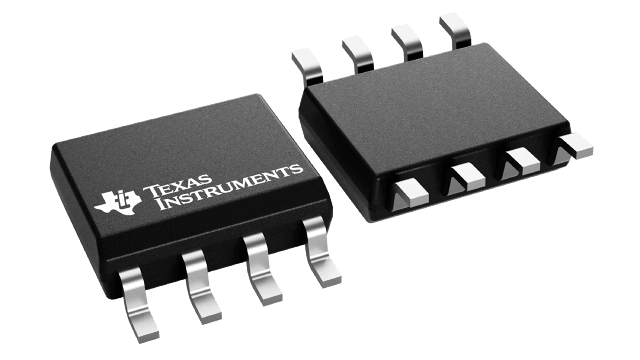Texas Instruments
TLV2313QDRQ1
TLV2313QDRQ1
Couldn't load pickup availability
TLV2313QDRQ1 Texas Instruments - Yeehing Electronics
Automotive-grade, dual, 5.5-V, 1-MHz, RRIO operational amplifier
Pricing (USD)
| Quantity | Unit Price |
| 1 — 99 | 0.746 |
| 100 — 249 | 0.574 |
| 250 — 999 | 0.422 |
| 1,000 + | 0.21 |
The above prices are for reference only.
Specifications
| Manufacturer | Texas Instruments |
| Product Category | Operational Amplifiers - Op Amps |
| RoHS | Y |
| Mounting Style | SMD/SMT |
| Package / Case | SOIC-8 |
| Supply Voltage - Max | 5.5 V |
| Output Current per Channel | 15 mA |
| Number of Channels | 2 Channel |
| GBP - Gain Bandwidth Product | 1 MHz |
| SR - Slew Rate | 0.5 V/us |
| CMRR - Common Mode Rejection Ratio | 70 dB to 85 dB |
| Ib - Input Bias Current | 1 pA |
| Vos - Input Offset Voltage | 0.75 mV |
| Supply Voltage - Min | 1.8 V |
| Minimum Operating Temperature | - 40 C |
| Maximum Operating Temperature | + 125 C |
| Shutdown | No Shutdown |
| Series | TLV2313-Q1 |
| Packaging | Reel |
| Input Type | Rail to Rail |
| Output Type | Rail to Rail |
| Product | Operational Amplifiers |
| Brand | Texas Instruments |
| Topology | Inverting, Non-Inverting |
| en - Input Voltage Noise Density | 22 nV/sqrt Hz |
| In - Input Noise Current Density | 5 fA/sqrt Hz |
| Ios - Input Offset Current | 1 pA |
| Maximum Dual Supply Voltage | +/- 2.75 V |
| Minimum Dual Supply Voltage | +/- 0.9 V |
| Moisture Sensitive | Yes |
| Product Type | Op Amps - Operational Amplifiers |
| PSRR - Power Supply Rejection Ratio | 90 dB |
| Factory Pack Quantity | 2500 |
| Subcategory | Amplifier ICs |
For more information, please refer to datasheet
Documents
| TLV2313QDRQ1 Datasheet |
More Information
The TLVx313-Q1 family of single- and dual-channel operational amplifiers combine low power consumption with good performance. This makes them designed for a wide range of applications, such as infotainment, engine control units, automotive lighting and more. The family features rail-to-rail input and output (RRIO) swings, low quiescent current (65 µA, typical), wide bandwidth (1 MHz) and very low noise (26 nV/√Hz at 1 kHz), making them attractive for a variety of battery-powered applications that require a good balance between cost and performance. Further, low-input-bias current enables these devices to be used in applications with megaohm source impedances.

